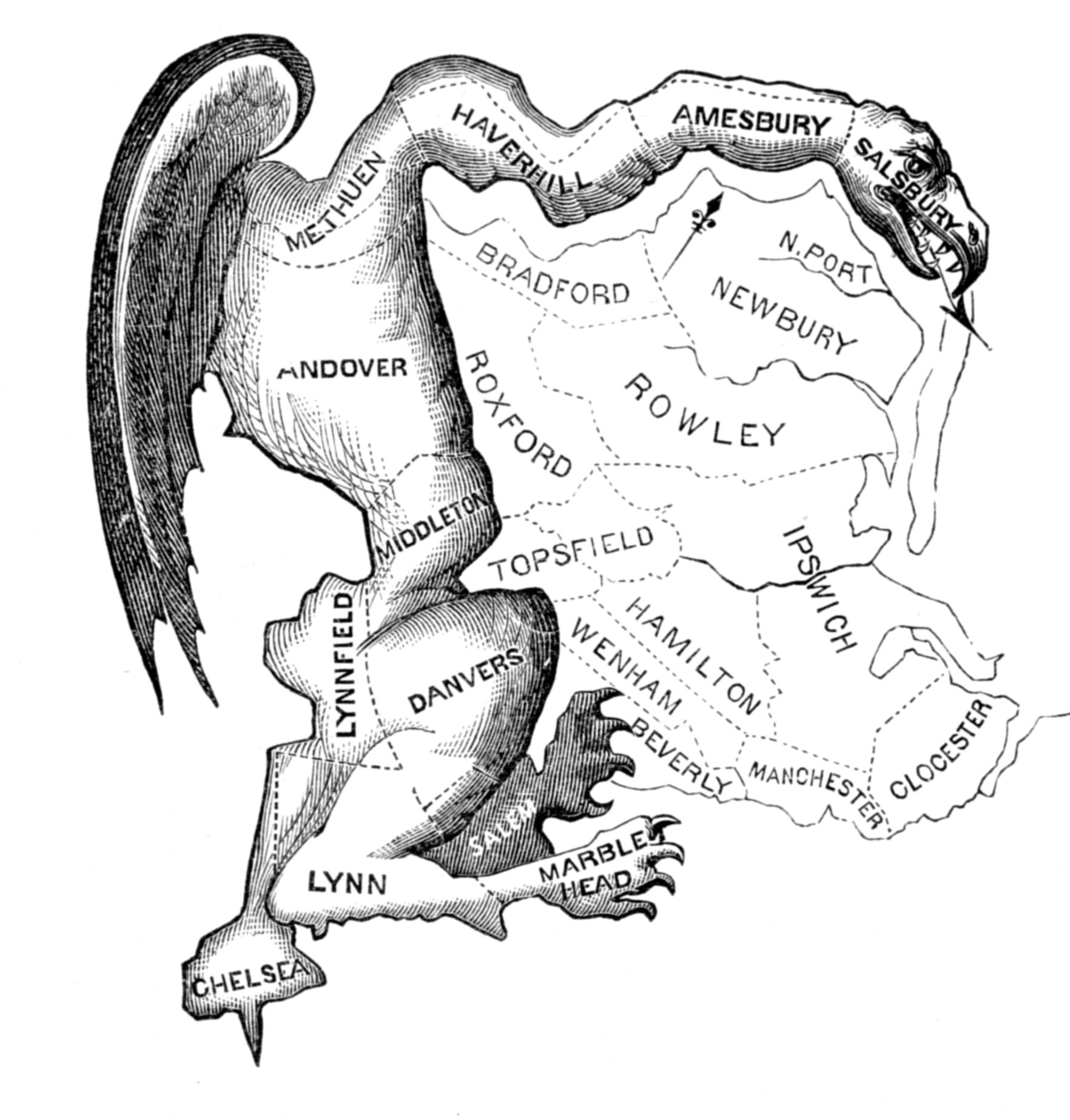
August 10, 2021
Redistricting: More criteria for drawing the lines
In the past 2 blogs, I focused on the “why” and “how” of Redistricting. We know that Districts are geographic, often described as “representational” areas defined by federal and state law. They must be of substantially equal size as measured by population of residents. We also know about the Redistricting process used in Connecticut and which institutions are invested with the authority to create District maps.
In the next two posts I focus on maps. In this piece, I take a closer look at criteria - in addition to equal population - that come into play, the criteria used in Connecticut, and the criteria endorsed by the League of Women Voters.
Redistricting Criteria
The Districts that are drawn through Redistricting are representational, meaning those elected are to represent the people living in the District. District lines determine who is on your ballot, where you go to vote and can influence whether your voice is heard (or not). These Districts will remain in place for ten years so the maps that are drawn in this cycle will have long-lasting impact.
The Redistricting Community Handbook provides a useful summary (p.8) of required and commonly used criteria that are in play to create District maps. See also National Council of State Legislatures for a review of criteria. These criteria are listed below.
Required criteria
- Equal size measured by population – Article 1, Section 2 of the U.S. Constitution requires that U.S. House Districts be equal in population; Equal Protection Clause of the 14th Amendment requires that State legislative Districts must be “substantially equal” often interpreted as allowing up to a 10% deviation of population.
- Voting Rights Act – Section 5 of the Voting Rights Act requiring pre-clearance of state voting laws and Redistricting plans was eviscerated by the 2013 Supreme Court ruling in Shelby v Holder. Section 2 prohibits Redistricting plans that discriminate on the basis of race, whether that discrimination is intentional or inadvertent. For more, see the NAACP Redistricting Guide - Power on the Line(s): Making Redistricting Work for Us.
Desirable criteria
- Contiguity: Requires that all parts of a district are connected to another part of the district and the boundaries are a single uninterrupted shape
- Compactness of district shape: “Having the minimum distance between all the parts of a constituency”
- For an analysis of measurement, see: How to Measure Legislative District Compactness If You Only Know it When You See It
- Communities of Interest: Geographic areas such as neighborhoods in which residents have common policy concerns and would benefit from being in the same district
- Respect existing political boundaries: Not crossing boundaries where feasible
- Preservation of core of previous districts: Maintaining past Districts (ensures continuity)
- Competitiveness: Avoid creation of “safe” Districts
- Partisan fairness: Control of a legislature is largely in line with voters’ overall voting preference (measured by averaging results of statewide races)
Connecticut’s criteria
- Connecticut comports with Federal standards and in addition requires that Districts be contiguous.
- House Districts must not divide towns except where necessary to comply with other legal requirements.
- See Ballotpedia's article Redistricting in Connecticut and the Connecticut General Assembly Redistricting website for more.
League of Women Voters' recommended criteria
- Independent Redistricting Commissions are preferred: Voters should select their representatives rather than representatives choosing their voters
- All Redistricting approaches at all levels should be fully open and transparent and include the public
Criteria to require:
- Substantially equal population;
- Geographic contiguity;
- Effective representation of racial and linguistic minorities
- Criteria to include to the extent possible:
- Promotion of partisan fairness;
- Preservation and protection of “communities of interest”;
- Respect for boundaries of municipalities/counties;
- Compactness and competitiveness can be considered if no conflict with criteria listed above
Criteria to explicitly reject:
- Protection of incumbents;
- Preferential treatment for a political party
See page 21 of the League of Women Voters' 2020-2022 Impact on Issues for more.
Gerrymandering: Map distortions
Gerrymandering can happen in a number of ways. One approach is to consolidate communities into one district, which gives that community only one representative in the legislature. This is called “packing”. A District that is packed is characterized by what are called “wasted (or excess) votes” meaning a candidate/referendum wins by significantly more votes than are numerically necessary to secure the victory. A mirror image of packing is “cracking” – dividing a community across Districts and ensuring that the community is always in the minority and thus less likely to be adequately represented by their representatives. An example of cracking can be seen in the Watts community of Los Angeles, a community of majority Black and Latino residents. In 2003 the area experienced a significant storm with concomitant flooding and property damage. Watts was at that time divided into three Congressional Districts and three state Senate Districts. As one former Congressional staff recalled, thus illustrating the real life impact of Redistricting: “Residents weren't sure who actually was their member of Congress. [...] Residents who live on the same street may live in different districts. There was a lot of unnecessary frustration for constituents during a difficult time. This would have never happened if all of Watts belonged to one district.” As the League of Women Voters' People Powered Fair Maps© initiative summarizes: “Gerrymandering often protects incumbents and reduces the competitiveness of districts which can lead to depressed voter turnout when voters lose faith in their ability to effect change.” In addition to “packing” and “cracking” particularly targeting racial minority communities, the practice of prison gerrymandering has also disadvantaged communities of color. This practice undermines effective voting representation of communities of color by counting incarcerated persons - who are disproportionately Black and Brown - as residents of the towns where the facilities are located; these towns are largely rural and white. Connecticut eliminated the practice of prison gerrymandering in the 2021 session of the CT General Assembly, thus removing this source of embedded discrimination against people of color. League of Women Voters of Connecticut supported the bill to end prison gerrymandering in Connecticut which passed with overwhelming bipartisan support in both houses of the General Assembly. Governor Lamont signed the bill into law on May 26, 2021. |
Summary
In this Redistricting Blog, I provided an overview of various criteria that may be used in developing District maps. I hope you are beginning to see that the application of these criteria is not an exact science, and that criteria may be in contention. As an example, you can see that the criterion of “compactness of shape” could easily be in contention with a “community of interest” that represents parts of a state’s shoreline. Additionally, the discussion of gerrymandering makes it clear that “packing” and “cracking” can both be exploited as tactics to stack the decks.
In my next blog, I will help us look more closely at Connecticut’s Districts. I will introduce a free, online mapping application, review the output available therein, and consider how these results may foreshadow needed map adjustments resulting from population changes identified by the 2020 Census and by policy changes in Connecticut.
Action you can take today:
- Spend some time delving into the resources about Redistricting criteria
- Review the LWVUS Redistricting position in Impact on Issues, p. 21
Additional information:
- Ballotpedia - Redistricting
- National Conference of State Legislators - Redistricting Research Page
- Redistricting Community Handbook: Tools for Advocacy and Grassroots Engagement
 Most of us have heard of gerrymandering as it relates to representational Districts. The National Conference of State Legislatures (NCSL) defines the word “gerrymander” as: “
Most of us have heard of gerrymandering as it relates to representational Districts. The National Conference of State Legislatures (NCSL) defines the word “gerrymander” as: “